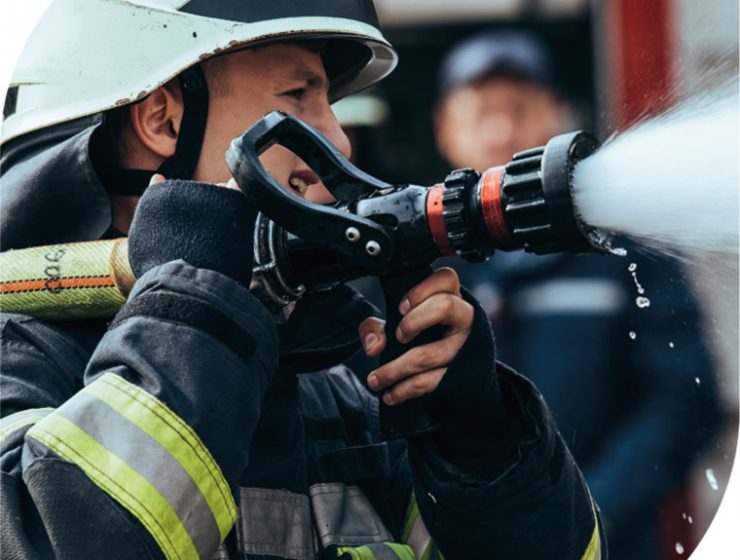Published by Skills for Justice
Why we need more than command and control leadership
Date 06.02.24

This is the first part of the six part Leadership Styles series.
There has never been a better time to consider taking steps towards a style of leadership in public services that is more inspiring of our human existence. The past decade has brought global economic disruption, geopolitical fragmentation, a digital revolution, and a pandemic, a collective tsunami of change and complexity which has carved new contours into the shape of leadership and organisational life.
There has never been a better time to consider taking steps towards a style of leadership in public services that is more inspiring of our human existence. The past decade has brought global economic disruption, geopolitical fragmentation, a digital revolution, and a pandemic, a collective tsunami of change and complexity which has carved new contours into the shape of leadership and organisational life.
In public services, these disruptions have been compounded by the shifting and fractious political landscape, where scrutiny of public services is at an all-time high, and trust at an all-time low. Leaders continue to face intractable challenges; delivering more with less, whilst responding to constant shifts and constraints generated by central government policies, changing customer needs, and combating toxic work cultures.
What’s the problem with command and control?
Edward Deming once quoted that “no one goes to work to do a bad job” and that sentiment is one that still resonates. The dominant picture of command-and-control leadership in some of the UK’s most prominent justice institutions is, sadly, one that is blemished by accounts of bullying, harassment, discrimination, and misogyny, with many dedicated staff opting to abandon years of service and their professions.
Reports from the recent Casey Review into policing points to “systemic and fundamental problems in leadership.” Similarly, the recent HMICFRS Values & Culture in the Fire Service Report reports incidences of bullying, harassment and discrimination in all services. In at least 11 services, the report found evidence of racism, sexism and homophobia and a culture where “staff, including managers, didn’t always feel confident to challenge poor behaviour”.
These are some of the conditions that have flourished under institutional, carte-blanche command -and -control styles of leadership. These accounts of poor leadership overshadow the great intent and desire of many leaders to change the culture within public services.
There are clearly situations when telling others what steps to follow can be truly useful. In operating rooms, in the cockpit of an aircraft about to make an emergency landing, or a more experienced nurse instructing a new qualified nurse how to safely inject a patient. A command and control style of leadership can also be efficient, particularly when working within the narrow parameters of the emergency services, in operational and fast moving response teams, or in the military where incidents are likely to require a controlled response. Under these circumstances, we have seen exemplary command and control leadership at its best.
There are however compelling signs of a shift away from command and control style as the dominant style of leadership in frontline services. In the military, the foundation of contemporary command and control leadership, there is a tangible embracing of the need to consider the perspectives of others when faced with tough choices. As depicted in the reflections of a US Army General; “If and when we get on the ground if the order we give you is wrong, execute the order we should have given you”. This narrative recognises that a different way of thinking about how we lead public services is needed, as we move forward in a world where disruption and fragmentation are becoming the norm.
What do we mean by a command and control style of leadership?
A command and control style of leadership is a legacy of the industrial era when leaders relied on top-down directed leadership. It was created in an era of Taylorism when employees were expected to obey directives with truly little resistance, and those at the top of the organisation made all the important decisions without expecting to be challenged. It continues to flourish in pockets of the justice sector where hierarchical structures and autocratic decision making pervades as the dominant mode of leadership.
It assumes, rightly or wrongly, that the complex and dynamic challenges faced by leaders today can be tackled with outmoded ways of thinking and leading.
A command and control response does however designate the leader as the holder of superior wisdom, and that they know exactly how to respond to problems which carry multiple levels of complexity. And, if in the mainstream of our everyday actions and interactions, outside of high risk and emergency response situations, we expect people to do simply as they are told, their capacity to think for themself will be significantly diminished.
Ambitions for change from the justice sector
The leadership ambitions, as articulated by three prominent services in the justice sector, strengthen the need for a more inspiring way of leading and nurturing others.
The College of Policing advocate its ambition for policing as:
“Our ambition is to transform leadership skills throughout the service, ensuring that everyone, including those in frontline roles, are equipped with the leadership skills necessary to protect, inspire and support their colleagues to deliver the best possible service to the public, leading to more diverse leadership, improved morale within the police service, improved performance in a rapidly changing operating environment, and improved public trust and confidence in policing.”
Similarly, the government’s vision for reform of the fire and rescue service, brings to life why it is important to focus on people. It advocates for supporting the workforce through open and fair practices, stating that “by nurturing talent and by focusing on wellbeing, we will be able to unlock talent and create a diverse pipeline of future leaders”.
And from the Probation Services 2023 Workforce Strategy, there is a clear objective to: “fostering confident leaders who inspire and empower others. Leadership is demonstrated at all levels, and we are committed to nurturing this. We do not need to be managers to be leaders, but all leaders must inspire, challenge and empower the people they work with to help us achieve the objectives of our Probation Workforce Strategy and deliver excellence.”
These ambitions for leadership that inspires, nurtures and empowers cannot be fully achieved under a command and control style of leadership alone. Caspar Craven, a leadership thinker, in his recent book, ‘Be More Human ’, calls for a “rethinking of the rules of teamwork and the leadership associated with it. You can’t navigate a new world using an old set of charts”. He calls for leaders to let go of thinking that that we know everything, and have the courage and vulnerability to set ego aside and embrace what makes us human.
Craven also contends that as leaders, we have ONE distinctly human competitive advantage as we grapple with a fast moving disruptive world, and that is the extraordinary skills of our teams.
I believe – and so does Skills for Justice – that complementing command and control structures with a coaching style of leadership can help the justice sector achieve their ambitions. In my next article, I’ll explore what we mean by a coaching culture and how it has developed as a modern leadership practice.
The views expressed in this article have been informed by conversations with individuals in the justice sector but otherwise represent the views of Skills for Justice (part of The Workforce Development Trust) based on our experience of working in the sector and our research into coaching cultures.
As experts in the fields of coaching and culture transformation, our LMOD team have a wealth of experience in guiding organisations towards a coaching culture, and a faculty of associate coaches to draw from.

Download the full eBook
This article is the first in our six-part Leadership Styles series. Access the full series in our downloadable eBook.
"*" indicates required fields







